|
The Dead Outnumber the Living is a web based, free to play, choose your own adventure that I created about 5 years ago with the Twine tool. This zombie apocalypse experience contains over a thousand passages, with pathways splitting and converging at points, items you can collect and combine, dynamic ambient content, and even some light puzzles to solve. The game is a mix between a “choose your own adventure” book and a classic text based video game, going beyond the typical choose your own adventure theme by providing a vast amount of pathways, dynamic content, story clues, and a few puzzles to solve.
0 Comments
More quick reviews.
Warning: spoilers
The Last of Us 2 is an incredible narrative masterpiece. It’s difficult to put into words the range of emotions that this experience whipped me through, and how it left me feeling scene after scene. I gasped, jumped, smiled, and cried. I found myself hating then empathizing with characters, and likewise, completely siding with others to later question their motives. By the time I came out the other end, the deeply complex character motivation was grounded to my core, and I took on the burden of their affliction. I felt battered and scarred, identifying with characters for the deep pain of their experiences. It’s easily one of the absolute best narrative experiences I have come across. The writing was extremely clever. They inserted parallels in a way that only enhanced the story, never cheapened. They artfully employed “show, don’t tell” in a way that unveiled information in the most engaging rhythm. And while I was a little hesitant at first to be playing as Abby in the second half, I came to realize this wasn’t just to tell the other side of the story, but to have you feel how complex the situation and people are in this series of painful events. It allowed me to go from initially hating Abby to just feeling hollow and sad for everyone. As for the gameplay, I found the enhancements and additions to the original title to be sufficient. Yes, it was similar. That’s ok. The prone position added a new dynamic to stealth that I enjoyed, some new weapons kept combat feeling fresh, and hand to hand fighting (and dodging) felt gritty and real. The environments were truly magnificent. The Naughty Dog artists and designers continue to blow my mind. The joy of gazing on the environments, by itself, is enough reason for a second play through. And then there is the polish. I always felt immersed into this world. Sure, you can tell it’s linear and “level based” when you run up against the edges of the environments, but there isn’t not much to be done about that. In the days that followed my completion of this experience I continue to ponder the story. A true sign of a great work of art is when you have a lasting impression. It’s that feeling of when you walk out of the movie theatre and you spend hours rehashing what you just witnessed, and consider the deeper messages. When it comes to The Last of Us 2, there’s a ton of narrative elements one could parse out and overanalyze until the (real) world ends. Here are a few stand outs that really struck me:
10/10 Rapid reviews is where I write quick snippets on games I've recently played, and use the word "rapid" as an excuse to justify bad writing. Also check out parts 1-5.
Check out parts I-IV for more rapid reviews.
It's hard to find time these days to play all the great games that are out there. It's equally challenging to find time to write about them. So like in part 1, I'll keep this to the point.
Mega Man 11 - PS4 The first hour was frustrating: I'd die getting close to a boss, yet not quite reaching one, and then would try another level, not sure which was the best one to tackle first, and die some more. At that point I collected enough currency to buy a few essential upgrades, and instantly the difficultly swung in the opposite direction as I conquered level after level with little to no problem. The challenge was still there, it just started to feel more fair. All in all, it was a top tier Mega Man game, with an aesthetic that really appealed to me, fun weapons, and solid level design. 8/10 Castlevania: Rondo of Blood - PS4 This is classic Castlevania done properly. Levels are challenging but not to the point of frustration. The playable characters are unique. The music is stellar. The secrets are rewarding when discovered. My only critique of this game is that the dialogue and English voice acting in cutscenes are extremely cringe worthy. This is a must play for any Castlevania fan. 8/10 Dead Cells - PS4 I've never been a big fan of roguelike games. While I appreciate that there are some elements of persistence in Dead Cells, I personally gravitate to those games that are have more continuous forward motion. I played for a few hours and then moved on. Resident Evil 2 Remake - PS4 Capcom is continuing to head in the right direction with the Biohazard franchise, focusing on what made these games popular in the first place. So much attention to detail went into this game, and great improvements were made when compared back to the original. The environments are richer and more expansive. The story is more refined. It's enhanced in every way. What stands out the most is the impressive pacing. There is a rhythm to the encounters you face v downtime, the feeling of safety v insecurity, the placement of items that you find v being completely devoid of ammunition. You actually have to be careful when firing at a zombie, as they sways in a way that can be challenging to hit and move at you with extreme aggression. You have to be on your toes when you enter a room, and likewise, ready to search a room quickly when an enemy rattles at the wooden door that is between you, keeping it at bay. Fleeing is a tackle option, and is actually essential in some instances. The gameplay is utterly satisfying in so many ways. It just feels good to watch as a zombie recoils from a gunshot, followed by the shock of it continuing to push forward quickly after. Zombies lunge at you from around corners, making it so that walking is often not just more immersive but a safer option. You also can never trust a zombie on the ground, keeping you constantly on edge. I'm currently doing a second play through as Claire, having originally played as Leon (I elected to do the 2nd option that you unlock after the first play through). There are differences between Leon and Claire's runs, though I would say not quite as different as I had hoped. Needless to say I'm obsessed with this game. 9/10 Shovel Knight - PS4 This is classic platforming done to perfection. It's a little on the easy side, although I really didn't mind that. I also highly recommend playing the Spector of Torment campaign, which could have been its own standalone game in my opinion. 9/10 Red Dead Redemption 2 - PS4 What stands out the most to me with RDR2 is the amount of polish that went into it. It's incredibly detailed in terms of the mechanics, missions, and just the general interactions you have with NPCs and the world. The story and voice acting is topnotch, although I'm in the camp that feels that Dutch did get a little repetitive at times. There's also something that is so satisfying about the freedom you have to explore and decide how you want to interact with the people and places you discover. And the landscapes are drop-dead gorgeous. 9/10 Owlboy - PS4 Playing this game made me feel like I was transported back to the days of the SNES. Owlboy succeeds at marrying crisp platforming, beautiful 2D graphics, and a story that perfectly unfolds. 8/10 Axiom Verge - PS4 Some say it's the best Castlevania game ever. It's definitely one of the best Metroidvania games of all times. And it's insanely impressive what one human was able to create. There are so many secret areas to discover, incredible music, and tons of fun weapons. Although, I actually feel the amount of weapons was a determent to the game, as it was overwhelming and many felt useless simply due to the overabundance. Overall I really enjoyed this game and would love to see a sequel. 9/10 Crystalis - NES This, as well as the next 3 games, are all classic NES games I never had the opportunity to play during their original days. Crystalis is a solid action-RPG from beginning to end, and I can see why it is regarded so highly. The battle mechanics, namely coming from the unique swords that carry their own special abilities, made for simple yet effective battle strategies, as well as being the means to progressing through locked pathways. 7/10 Battle of Olympus - NES You may remember this game as the knockoff to Zelda II: The Adventure of Link. It looks, plays, and feels very much like it. The big differences being that it doesn't have the power of the stories and characters from Zelda, and it lacks the overworld element as well. I played this one for a few hours and gave up. Metal Gear - NES As with Crystalis, I played this one end to end. I will admit I did have to look up one part online in order to progress, which was a hidden wall that you had to punch through. Having played some of the more modern Metal Gear games it was fun to go back and discover that so much of the themes were established from the very start. 7/10 Last week I wrote a review of Resident Evil Revelations, and in short, I was disappointed. This week I'm returning with a review of Resident Evil Revelations 2. This being a rather old game by now, I'll keep my analysis short, and focus mostly on why it is so superior to the original. RER2 shines in so many places the original failed to. Compared to the original, RER2 has:
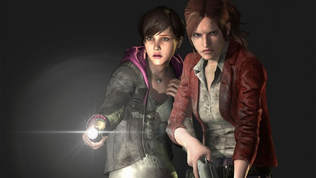 Overall it feels like a very different game. The biggest similarities are that you are always operating as a pair, although in the original the notion of having a teammate was a total farce. In RER2 your teammate is highly valuable, and extremely specialized. I found myself rhythmically toggling between partners in order to search, fight, and solve puzzles. There’s still a bit of the tedious nature in this dynamic, such as relying on one particular half of the pair to properly search. There are some areas where, despite being a great game, RER2 falls a little flat:
RER2 seems to have been heavily influenced by games like The Last of Us, and mostly for the better. There’s the middle aged man and mysteriously important little girl dynamic. There’s the character that can essential wall hack. There’s stealth zombie kills. And you can sprint. Obviously TLOU didn’t invent any of these themes or mechanics, but the connection is clear.
Overall, RER2 was great fun. I was constantly engaged with the level design, characters, and themes. It still holds up fairly well today. If you are thinking of checking it out, feel free to skip Revelations 1 (just read a quick synopsis). 8/10 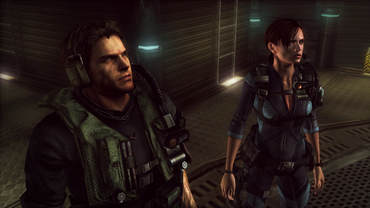 My first exposure to Resident Evil was watching a neighbor play the original on PlayStation. At the time, even as a fan of the zombie genre, I wasn’t that intrigued. It wasn’t until the rerelease, Resident Evil: Rebirth for GameCube, found its way into my home that I finally dove into a Resident Evil game. I was hooked, and played it through a few times. I was ready to consume all things RE. Fast forward and, after wrapping up RE4, I was caught up on all the series had to offer at the time. By the time I had the opportunity to play RE5 I had heard enough about the frustrations of the AI partner and the mixed reviews, and I decided to skip it. Then RE6 came along and snippets of info was enough to scare me away from that one. It just felt like a strange deviation from what attracted me to the series. Once RE7 was announced I had grown eager to return. This is a game that reminded me why Resident Evil is one of my favorite series. It looked and felt amazing. The environments were truly terrifying, and I actually jumped a few times. It defined what survival horror should always be. Which brings me to Resident Evil Revelations. Purchased for PlayStation 4, I figured I would give it a shot. Knowing nothing about it, I placed my order. Here’s where it fell flat:
This wouldn't be the first time that a Resident Evil title let me down. Zero and Outbreak were also let downs, just for different reasons. There is a bright side to Revelations, however. At least, I think so. I just played the first hour of Revelations 2, and I'm amazed at how much of an improvement it is in so many ways. I was gripped from the start, and felt the horror that was missing in its predecessor. The team mechanics are sensible, the monsters more terrifying, and the environments are engrossing. While it still is more linear than I prefer my RE games, it gives a better sense of being free roaming. My only beef with the sequel, thus far, is that it clearly was influenced with many of the mechanics and feel of games like The Last of Us. To be fair, those mechanics weren't all original on their own, and have become commonplace. All in all, I have high hopes for this sequel. 5/10  For me, like most that had the opportunity, my first experience with the Nintendo Entertainment System (NES) was at a young, impressionable age. Sure, we had an Atari before that, and a couple of games. But it was the NES that had the largest and most lasting impact on me. I was probably about 5 years old when my neighbor, Miles, beckoned me into his home, touting that he had a new game system, with promises of a dragon. Inside I was introduced to Super Marios Bros, and, as I recall the memory, I imagine my jaw remained unhinged for the length of my visit. It wouldn’t be long before an NES reached my home, and many years followed where I would journey, sometimes alone, sometimes with friends, through a rich expanse of worlds. Fast-forward to around 2002 or 2003, during my college years, where I decided to unpack (and dust off) my old NES. It felt like it had just been long enough where coming back to it felt meaningful. By this time, multiple systems had already come and gone, and the NES, for most, had been forgotten, often only surfacing in a garage sale put up by a parent cleaning an attic. This is also when I learned about the unreliable and degradation of the 72 pin connector. A few dollars and a few weeks later, a replacement arrived from a vendor on eBay. I recall opening up the system with a feeling that was akin to an archaeologist unearthing a sacred grave. In some ways, it felt like an invasion, and in another, it felt like exploring a newly discovered planet.  After getting the NES operational again, I casually played a few games. It wasn’t long until I was back at it with modern games like Grand Theft Auto III: Vice City and Counter-Strike. My NES was quickly forgotten, re-boxed and packed away. Perhaps it was simply too soon. It’s now 2018, thirty-three years after the North American release of the NES. At work, we have a #retrogames channel in Slack, where we discuss all things related to retro gaming (including the definition of what retro gaming is). It was in this community that the emotions I have deeply ingrained with the NES resurfaced. Quickly I plunged into all things retro gaming. I binged listened to countless episodes of the Retronauts podcast. I grinded through books like I Am Error, Legends of Localization Book 1: The Legend of Zelda, The Anatomy of Castlevania: The NES Trilogy, and NES Works Volume I and II. I played modern takes on 8 and 16 bit style games, such as Axiom Verge and Owlboy. I also found myself back in a place I hadn’t been since the early 2000s: eBay. My collection of original NES carts quickly doubled. In the last 6 months I learned more about classic gaming than I had ever known. I gained layers of appreciation and understanding that simply didn’t exist prior. While in doing so, some of the charm of my memories may have been tainted, yet overall, my lasting impressions of what retro gaming means to me has been greatly enhanced. It reminded me a bit like my experience in studying film in college, as once I understood what the man behind the curtain was doing I could now love these things deeper, but the man could never be unseen, and thus some of the illusions were forever lost. As I prepared my original NES for its return performance I came prepared with the knowledge that hooking an NES up to a 4K television was not going to be an ideal experience. However, I couldn’t even get that far, as just like in the previous round through memory lane, my NES failed to load any games. After a deep clean and another new pin connector I was back on track. This time my goal was to experience games I had never played before, or those that I had only a glimpse of in their infancy. I decided to start with Crystalis. As feared, the combination of the NES on a modern TV was a mess. The colors were off. Any movement on screen was distorted. And I could see the preloaded artifacts on the right side of the screen, which was an area that would have been obscured on a CRT television. I knew this just wasn’t going to work. Thankfully, there are heroes in this world that have produced gems like the AVS, which plays original NES (and Famicom) carts and outputs to HD. I went ahead and ordered one, and felt back on track. I’ve since played a number of games, and not all to completion. I dabbled in games like The Battle of the Olympus, drawn to the Zelda II: The Adventure of Link style (or to be blunt, it’s a total rip-off). And played a few levels here and there with Batman: The Video Game, Commando, and The Legend of Kage. With so many games brought into my home all at once I had too much to choose from, a luxury that didn’t exist back in the 80s, which resulted in my fickleness. Thus far, at the time of writing this, the only two I have completed end-to-end are Crystalis and Metal Gear (both great). Playing games as old as these, so many years later, after experiencing games evolve, and having those games be ones I had never played, resulted in a nostalgia-cocktail. It’s an experience that has been rather intoxicating. I often feel transported back in time, as if I just received ones of these games as a gift. Ignoring everything I have learned and experienced since then, however, is sometimes a challenge, and it’s not something that I feel one should even bother to block out. There is enjoyment to be found in comparing these games to those that followed, to feel the evolution and see what inspired the future. Granted, a hidden door in Metal Gear that is part of the critical path made me want to pull my hair out a little, and it was something I ended up looking up online. But this was the NES! Random, hidden doors was a sign of the time, and I can accept that. Warning: Sweet Home spoilers ahead 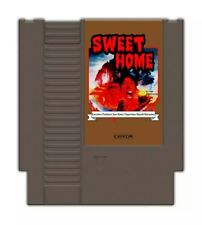 Which brings me to Sweet Home. If you haven’t heard of Sweet Home then you are not alone, as it was only ever officially released in Japan. The version I am playing is a translated reproduction cartridge, meaning it isn’t an original NES game, but you wouldn’t know that by the looks of it. Sweet Home, produced by Capcom, is a precursor to the Resident Evil (Biohazard) series. Similar to Resident Evil, it’s a survival horror themed game that takes place in a creepy mansion filled with creatures and zombies. The mechanics draw similarities as well, as you progress by collecting items, backtracking, and using those items to progress in the form of light puzzles. Notes left behind offer clues to both your advancement and the grander story. Even the ability to toggle between characters is later found in Resident Evil Zero. Where Sweet Home differs from the Resident Evil lineage the most is two-fold: 1) it’s an RPG, and 2) what makes this game so unique is how you partner with the five playable characters. With regards to the latter, the dynamic of grouping (and ungrouping) with your fellow trapped survivors is what makes the game unique and special. You are restricted to no more than three characters in a party at a time, and each character can only hold two items, in addition to their special item. This forces the player to make strategic decisions. Do I have a good set of items for what I anticipate ahead? If I need items from the group of two I left behind will they be able to safely catch up to the party of three? You’re constantly making trade-offs, and while on occasion it feels somewhat tedious, it mostly feels engaging. And at times, safety in numbers can backfire. I find myself often toggling between holding a stance that the clues are too literal, and thus, too easy, and wishing the game was more challenging. And then, just minutes later, my entire party of three will fall into a pit, hanging for their lives, and because I wasn’t careful enough my remaining party of two isn’t able to get to them in time to save them. It’s actually moments like these that really up my appreciation for this game as it’s these types of creative surprises that adds flavor. 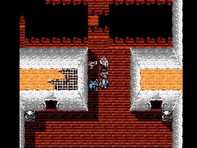 While I save often in this game, in fear of permanently losing a character, there was a moment that occurred early in the game where I decided to not reset and, instead, decided to accept and carry on. I had crossed a pit to obtain an essential item, by placing a log to form a bridge. My party of three doubled back after gathering the item, and this is when the character in the center of the line broke the bridge and hung to the edge. I was able to pull the character back up, but this meant that one of my other characters, Asuka, was now stranded on the other side. I ended up leaving Asuka on that lonely island for a huge portion of the game, always knowing, or at least hoping, that I would come back. It was a promise I made both to myself as a player as well as between the characters in the context of the game world. Eventually I found more logs, returned, and saved my friend. It was a sense of relief to finally be reunited. That was also when I realized that Asuka, all along, had a log in her inventory that she could have used to cross that gap. I laughed to myself. The survival horror theme is bolstered even further by the ways in which characters become separated. If you’re like me, you occasionally take unnecessary risks in games (especially if you just saved your progress) in an effort to push the boundaries of the game. For example, there are spirits that will pull a character away from their group, plopping them in a room many screens away. The wisest decision in this moment would be to take the remaining two characters that are still bound together, and to have them navigate to their lost friend. However, like foolish teenagers in countless horror movies, I will often take my solo character and journey on, acting as if I am confined to the perspective of that person. Ask yourself, if you were taken from your friends by ghosts, would you sit still in a strange room? Probably not. Now, a solo trek like this can be disastrous, as you might break a flimsy plank that stretched across a pit, with no one to pull you up. Or you will face enemies alone, and with a finite number of healing items available in the game, this isn’t wise (assuming you even have an item to heal yourself with). This is actually where another ingenious mechanic comes into play: the ability to call for help. In this mode, another character (or set of characters) has limited time to run towards their comrade and assist them. It’s a heart-pounding moment. 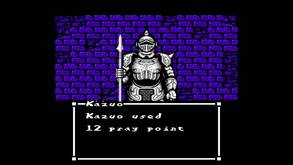 Further on the topic of encounters, as mentioned before, this is an RPG, albeit a rather atypical one. Battles are randomly triggered, with the exception of the fights that ensue when you come into direct contact with enemies that traverse across some of the screens. The battles are rather simple, made up primarily of attacks and prayer (think magic). Many of the traditional systems found in RPGs, such as collecting coins, purchasing weapons and items, and resting at inns to regain health, do not exist in Sweet Home (nor do they have a place here). Rather, there is no currency, weapons and items are discovered, and hit points and prayer points are replenished only with tonics. The environments powerfully convey the mood. In this vast mansion you twist and turn down hallways, up and down stairs leading you to great heights and depths, and explore the outer areas surrounding the property. Each section is truly unique, ranging from underground labyrinths to a lakeside forest. The top-down view is contrasted by more detailed scenes of paintings and monuments, and the occasional open door animation. Most areas, in addition to having their own visual complexity, are accompanied by a variety of music compositions that fit snugly in the horror genre. A rolling low tone base line is accented by squealing highs. There is a deliberant tempo juxtaposition between the moderate beats-per-minute (BPM) of the exploration music and the upbeat, panic inducing songs that quickly loop and build anxiety when you battle enemies and suffer from poison. 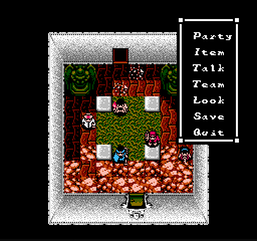 Even with the limitations of the NES, Sweet Home managed to nail the theme of what survival horror should be. You’re scared. You’re often alone. Your resources are limited. Danger lurks behind every corner. The atmosphere is terrifying. A sinister backstory slowly reveals itself, making the world that much more frightening. Death is final. Not only did Sweet Home bring me back to the joy of experiencing a new NES experience, it also reminded me of the pleasure of solving mysteries through the use of taking notes. Note taking, for many, in and outside the context of gaming, is considered a chore. Growing up in the days of the NES, however, it was not just helpful at times, but often essential. Drawing maps, scribbling down clues, recording passwords...these are all staples of the NES experience. At this point, from what I can gather from the progression of the story, I’m close to the end. As for what comes next, I will dip into the backlog of titles I still have waiting for me, and keep playing, for as long as it still feels like home. And who knows, maybe in another 10 years I’ll dust off my NES games one more time for another go. Back in April of 2015 I wrote a post titled 11 Tips Not Taught in the Loading Screens for Multiplayer Mode in The Last of Us. With the announcement of the sequel to The Last of Us, excitement is once again brewing around this title, so I spent some time revisiting the multiplayer mode, and today am listing out some additional tips and strategies. Tips are in no particular order. 1. Mark while firing - If you are firing on an enemy, always simultaneously mark them, if not marked already. It's no extra work, and you not only get parts of marking, but you also get parts if a teammate kills the marked target, even if you are already down or dead at that point. 2. Baiting downed allies - This doesn't make you a bad person...honestly. Sometimes baiting a downed teammate in order to down an approaching enemy is the best thing you can do for your team, especially when playing in Interrogation mode. Don't just go charging out in the open to help a teammate up, if it means you are going to get shot down in the process. 3. Run baiting - When you sprint, you appear on the enemy radar. This can be used to your advantage. Try sprinting in one direction, then pivot in a different direction and wait for an unsuspecting enemy to approach. 4. Changing load outs mid-game - Try this out: start with a crafting load out, so that you can quickly craft items from the materials you pick up from lockboxes. Then, after your first death, switch to a more favorable load out. If you upgrade a weapon and then switch to a different load out that has that same weapon, don't worry, because you won't lose the weapon upgrade. 5. Ideal place to die - With the exception of situations where you think you can be helped up or when you are hiding from a potential interrogation, crawl out into the open. That way, if an enemy wants to loot your leftovers, they have to do so without cover. 6. Self terminate - When downed, it's often to your advantage to die quickly, with the exception of when you might be helped up or when playing in Survivor mode, so that you can respawn faster. If this is the case, and you see some enemy molotav fire or an enemy bomb, crawl on top of them. And by taking out that bomb, that's one less bomb for your team to worry about. 7. Trigger enemy bombs while crawling - Similar to the previous point, try crawling over an enemy bomb when an enemy is nearby. That way, you can trigger the bomb and take out the enemy...along with yourself. 8. Block vault objects while down - I know, I have a lot of tips related to crawling around. For this one, the idea is to crawl next to vaulted objects, such as low walls and windows, in order to prevent enemies from jumping over to your side. This can be handy for preventing an enemy from getting an interrogation, or just to throw them off and leave them exposed. Here is the original list from 2015:
|
AuthorBrian Riggsbee lives in San Francisco CA. He enjoys gaming, writing, creating art, practicing Brazilian Jiu-Jitsu, chasing adorable dogs, and spending time with his wife and boy. Categories
All
Archives
December 2022
|

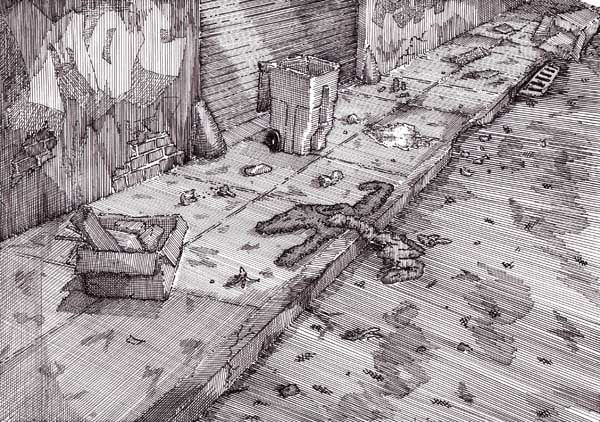
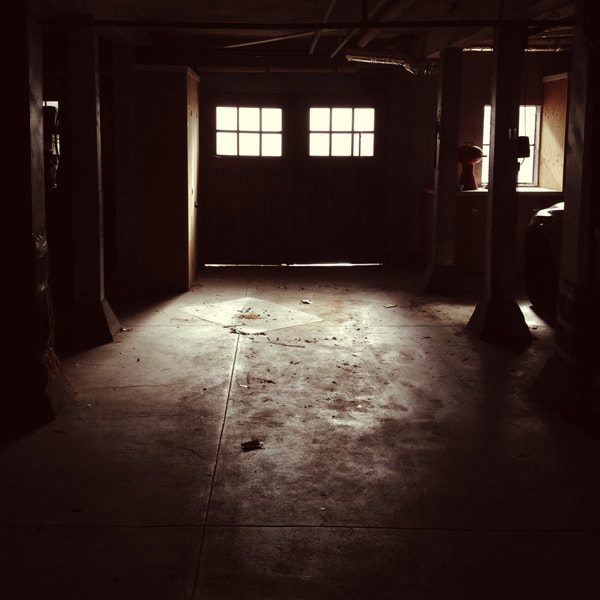

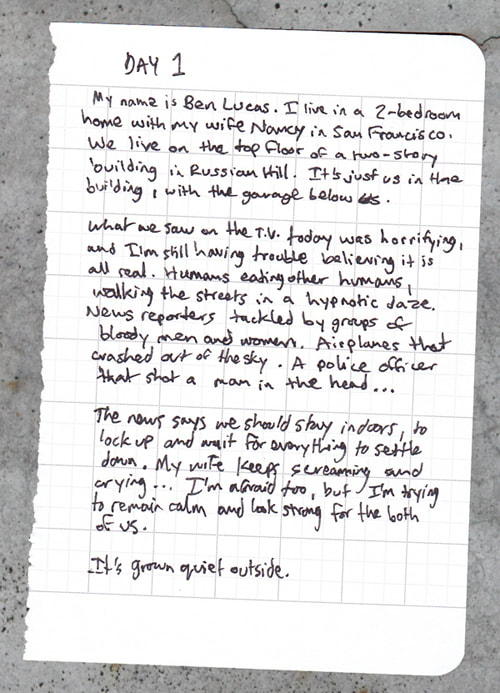
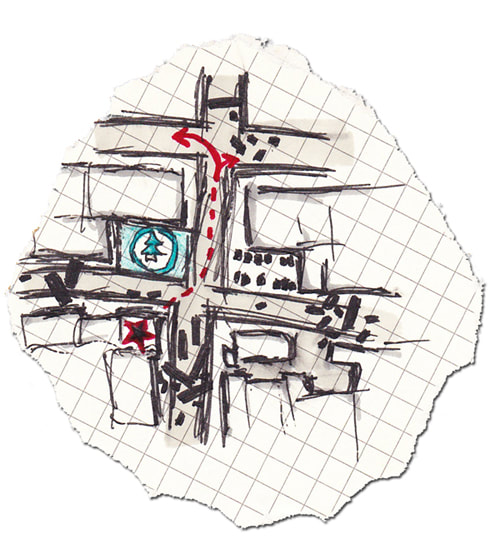

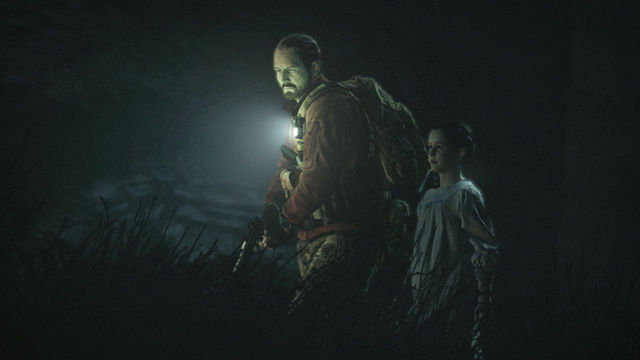
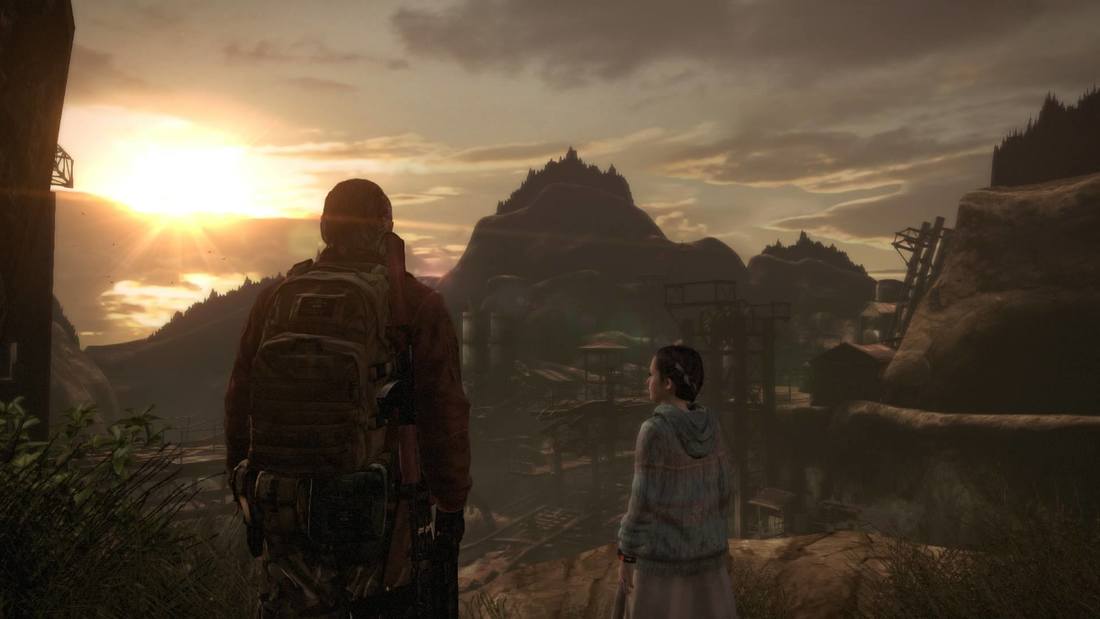
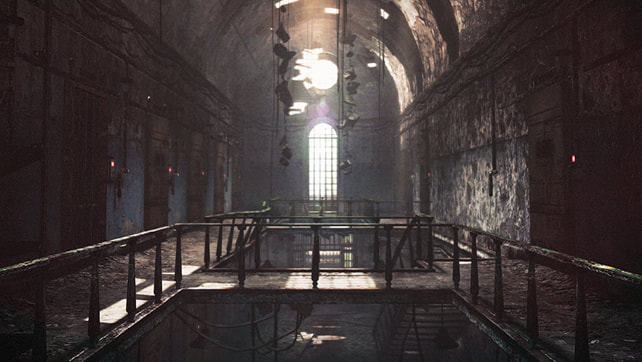
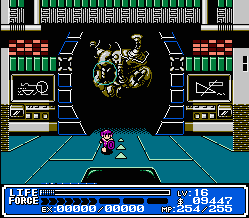
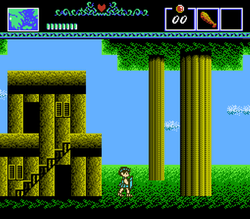
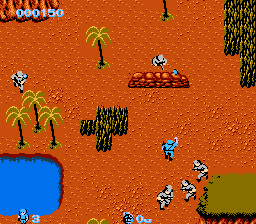
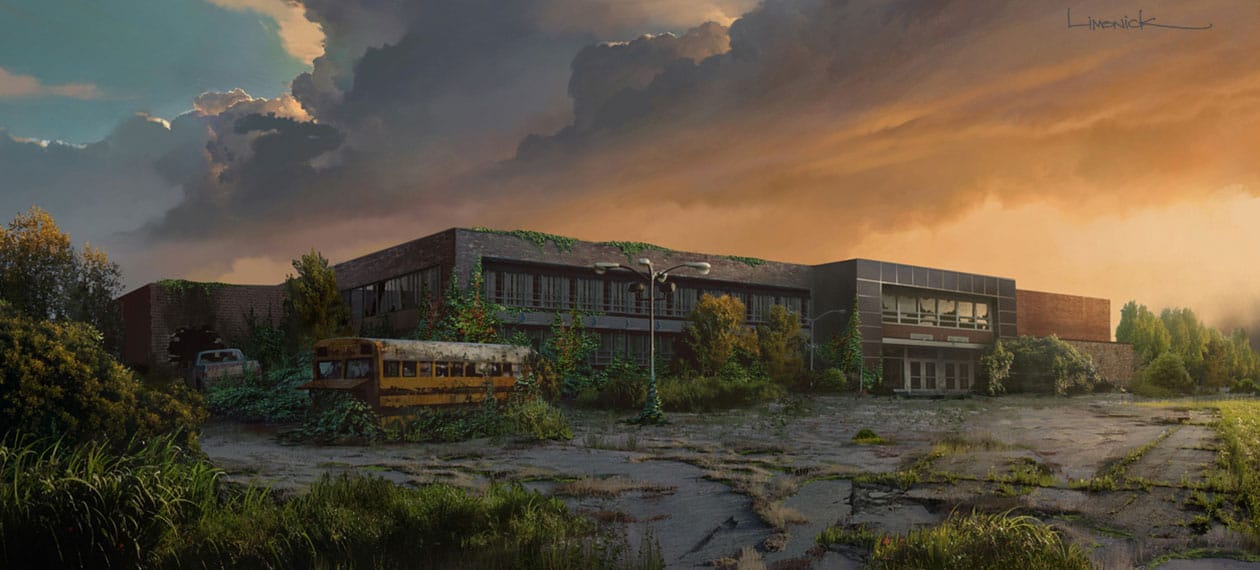
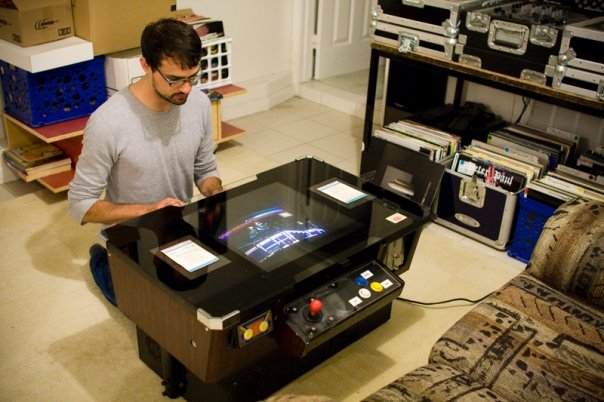
 RSS Feed
RSS Feed